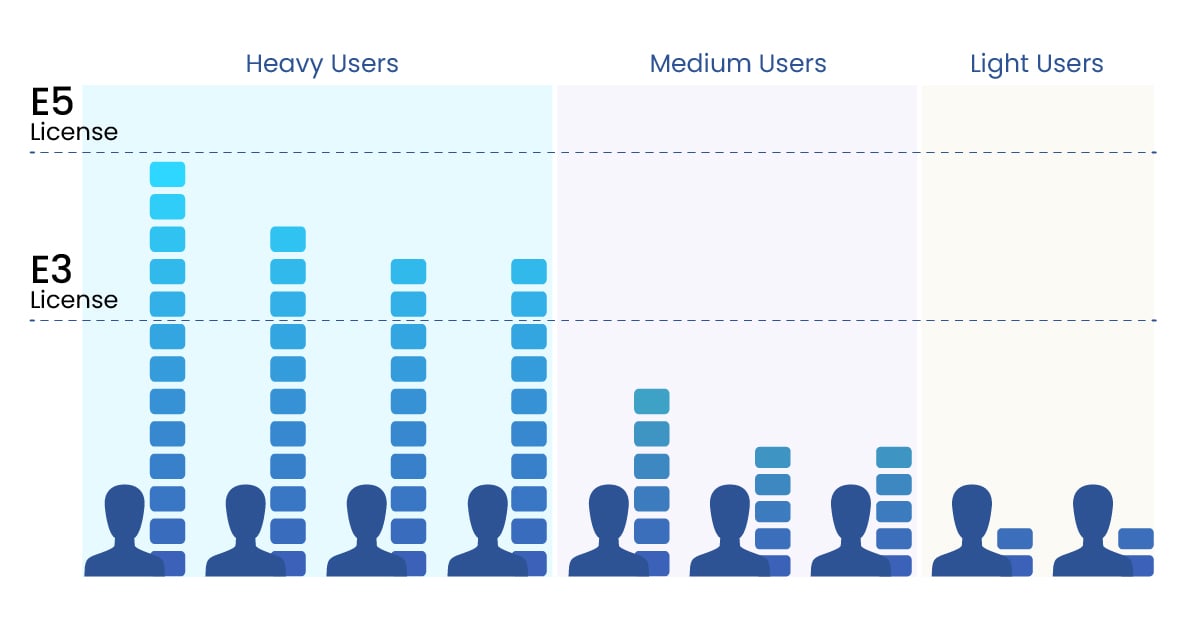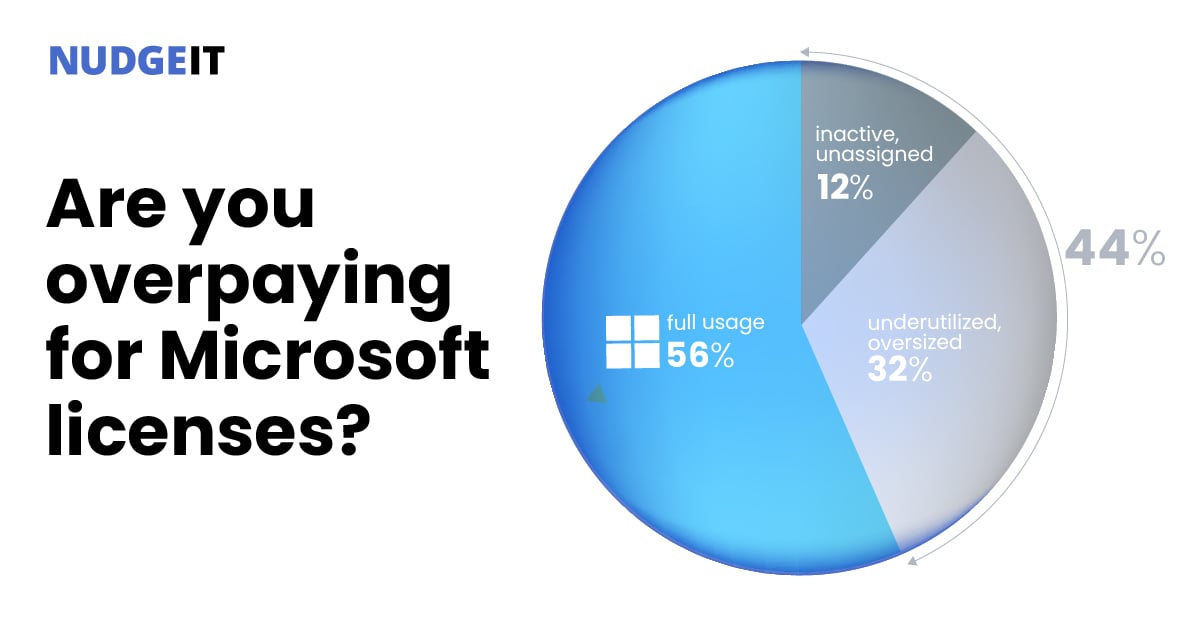
Uniform Licensing: Easy Today, Expensive Tomorrow
Jun 3, 2025 7:29:07 AM
Regarding Microsoft 365, most mid-sized companies are leaving money—and power—on the table. Many CIO’s default to "safe" licensing strategies: one-size-fits-all, top-tier plans for everyone. Simple? Yes. Efficient? Not.
Today, rightsizing your Microsoft licenses isn't just a cost-saving tactic—it's a strategic move to gain control over your IT spend and strengthen your hand when negotiating with Microsoft.
Underutilized licensing
Managing licensing can feel like spinning plates in SMEs with 250 to 2500 users. The temptation is understandable: assign every user an E3 or Business Premium license and avoid the headache of segmentation.
But the reality is sobering: Studies show that 44% of Microsoft 365 licenses are underused or oversized. For a 500-user organization, that's the equivalent of paying for around 220 licenses nobody fully needs.

It's not about throwing everyone onto ten different license types—that would be an administrative nightmare. It's about clarity:
- Knowing which roles genuinely need full E3 or E5 functionality.
- Recognising that a lighter license (F3, Business Basic) would easily suffice.
- Segmenting sensibly—into two or three core groups—not dozens.
This clarity becomes a powerful lever when it's time to renegotiate your licensing agreement. Getting clarity can be daunting – if you look at the Microsoft short guide to licensing modern-work-plan-comparison-enterprise, 11 pages of details on licensing.
Visibility Equals Negotiation Power
When you know exactly what your users need (and what they don’t), you can approach Microsoft—or your reseller—with a firm, data-backed story.
You’re not just another customer buying licenses "just in case." You're a customer who knows their exact usage profile.
That changes the conversation. Instead of being upsold to the next-largest bundle, you can negotiate discounts, mix and match licenses within your tenant, and push back if your partner tries to steer you toward unnecessary add-ons.
In today's environment, where cost control matters more than ever, transparent license governance is a strategic advantage, not a paperwork exercise.
Rightsizing Without Creating Chaos
Worried that managing multiple licenses will be messy? It doesn’t have to be.
- Group-based licensing in Azure AD can automate assignments.
- Usage reports from the Microsoft 365 Admin Centre (or simple Excel exports) can guide decisions without significant overhead.
- Starting with just two or three license profiles keeps things manageable.

You don’t need to micromanage every user—you need enough segmentation to make smart decisions.
If you are interested in the pros and cons of the uniform or individual group-based licensing models, take a look at our whitepaper, Microsoft 365 Licensing: Individualised vs. Uniform Approaches
Final Takeaway
Some simple takeaways.
- Review your actual usage before your next Microsoft renewal, if you do nothing else.
- Rightsizing isn’t about creating operational chaos but about gaining cost clarity and negotiation strength.
- Ultimately, it’s not just about saving 10–15% on licenses. It’s about finally putting your organisation, not your vendor and partner, back in control of the license strategy.
Remember: Clear usage visibility = smarter licensing decisions = stronger negotiation position.
Submit a comment